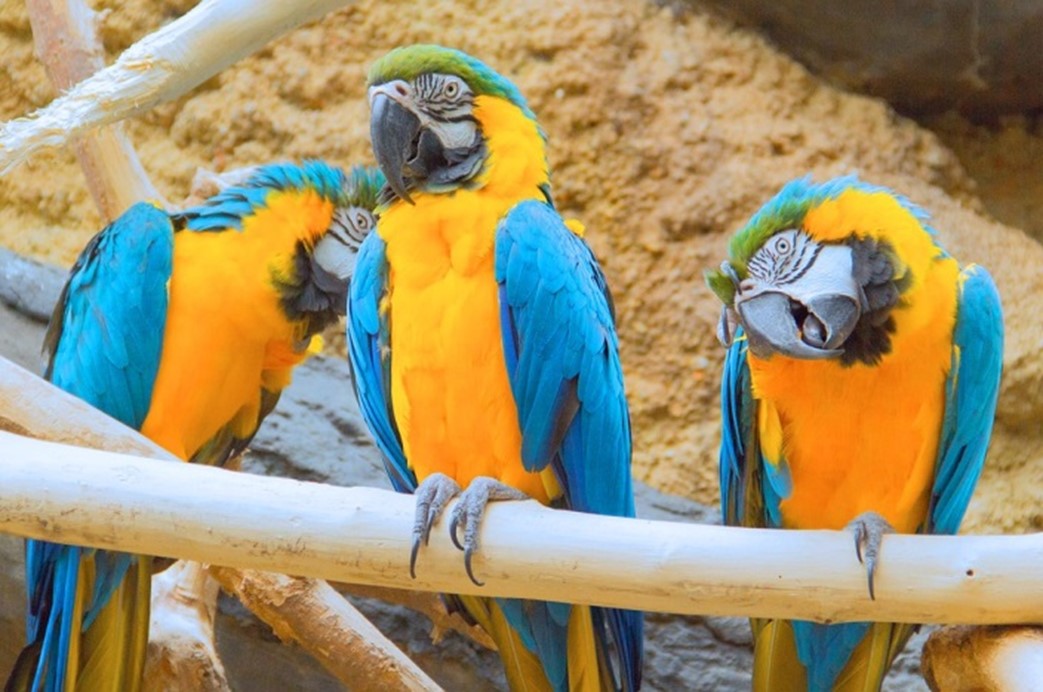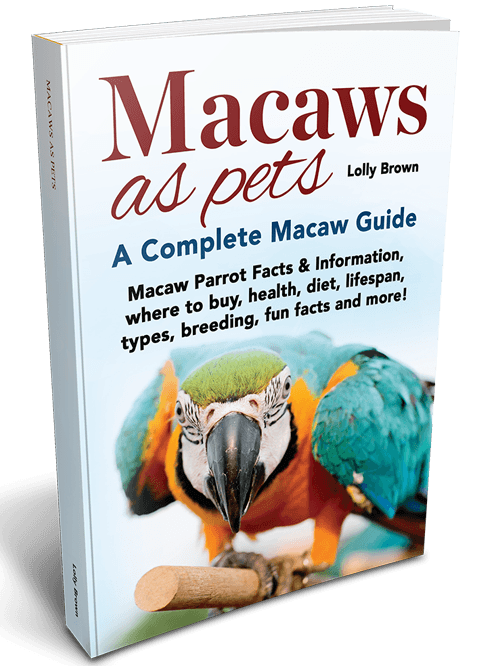CHAPTERS
Navigate to chapter
► Chapter One: Introduction
► Chapter Two: Meet Macaws
► Chapter Three: Macaws’ Requirements
► Chapter Four: Tips in Buying Macaws
► Chapter Five: Maintenance for Macaws
► Chapter Six: Breeding Macaws
► Chapter Seven: Keeping Macaws Healthy
► Chapter Eight: Macaws Checklist
► Chapter Nine: Relevant Websites
Chapter Two: Meet Macaws

The great thing about Macaws is that they are BIG
IN SIZE AND INSIDE! Before getting a beautifully crafted bird as your pet, it’s very important that you know what it is inside out! Like many other things, you need to have proper knowledge and invest a significant amount of time to truly study and understand where these birds are coming from. That is how you will determine if this kind of pet is the right choice, so that you know what you are dealing with.
On the next page, you’ll be introduced to one of the most respected parrots in the world. Prepare to meet macaws!
Macaws, which are scientifically under the Subfamily of Arinae, are birds that are native to Mexico, Central America, South America, and formerly the Caribbean. These birds can live up to possibly over 60 years!
They look intimidating at first and can be quite tough sometimes, but inside they are soft and sensitive creatures which make them an interesting choice as pets.
These parrots had been popular since the turn of the 17th century and because of their brilliantly colored feathers they were associated with some religious significance and highly adored by Pueblo Indians in United States.
Macaws are mostly large in size but there are also other types which are relatively small. They have vivid colorful feathers that come in an array of different colors like yellow, green, blue, white and red. Different variations of hybrid macaws also exist, mainly for pet trade.
Macaw parrots have about 23 subspecies, classified into 6 types or genera; these are Anodorhynchus, Cyanopsitta, Ara, Orthopsittaca, Primolius and Diopsittaca.
Since these birds are quite large, that usually means that they have loud voices and love to screech a lot, but they
can be quickly taught to speak, whistle and imitate other sounds like most birds in general.
Aside from talking, they are also fond of chewing and playing challenging games to exercise their intelligence. Sometimes what they do is intimidate people by leaning towards them just to see the startled look on their faces and reaction! Yes, they are totally witty and have a knack for a fun time!
Most Macaws are generally easy to train and can be well-behaved as long as you provide them with adequate attention, interaction, and love. They can easily become part of the family and a loving companion if you are willing to put in the time and effort to take care of them.
Macaws can be easily identified because they have slim bodies, quite broad heads, very long pointed tails and wings that allow them to swiftly fly as well as powerful sharp beaks, which ultimately gain them some degree of respect among the parrot species.
Their average size including tails is about 11 – 39 inches, with a wingspan of 86 – 140 cm, a top speed of 24km/h and weighs about 907 – 1814 grams. It has an average lifespan of 50 – 60 years.
In terms of their behavior and personality, they are quite notorious for having a difficult attitude, their sharp beaks and jaws can be used for biting, feather-plucking and screaming. Due to their intelligence and curious minds, they tend to chew on any objects available and require lots of interaction.
These parrots are omnivorous and usually feed on seeds, insects, fruit and nuts. Macaws are not sexually dimorphic; although males can be identified by their larger heads than females. DNA sexing is highly recommended to determine the gender of a macaw parrot.
In terms of reproduction, the ideal breeding age starts at 4 to 8 years old; females’ clutch size ranges from
2 – 3 eggs and incubation lasts for about 22 – 24 days.
Majority of these birds are endangered species in the wild. Some macaws species are now extinct such as the Spix’s Macaw and Cuban Red Macaw due to bird smuggle.
These birds can be trained to mimic human speech and imitate other sounds by using their bifurcated trachea, which are equivalent to vocal cords in humans.
Continue Reading…
Want to read the entire thing?

